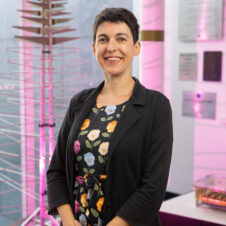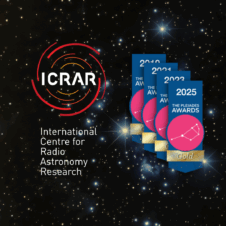
Artist’s impression of the low frequency portion of the Square Kilometre Array (SKA-low) which will be constructed in Australia. In the latter part of this decade, 250,000 of these person-height antennas will be built in Western Australia and observe the Universe at radio wavelengths. Image Credit: Swinburne Astronomy Productions/ICRAR/U. Cambridge/ASTRON.
ICRAR Engineering Director Professor Peter Hall said “I am delighted that the initiative and hard work of our collaborators has produced such a successful outcome.”
ASTRON have released a statement saying:
“A consortium consisting of ASTRON and the Universities of Amsterdam, Groningen, Leiden and Nijmegen has been awarded 12M€ for their participation in the design of the Square Kilometre Array (SKA). The SKA will be the world’s largest and most powerful radio telescope. Construction will start in 2018 in Australia and South Africa and the first results are expected in 2020. The announcement of funding from the second call of the Netherlands Roadmap for Large-Scale Research Facilities was made by Sander Dekker, the State Secretary for Education, Culture and Science, and Jos Engelen, chair of the Governing Board of Netherlands Organisation for Scientific Research (NWO) at an event in Leiden.”

